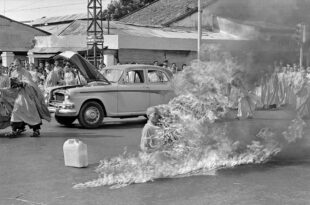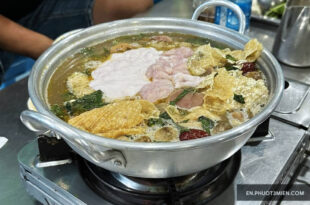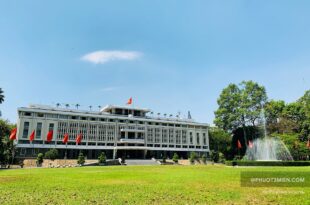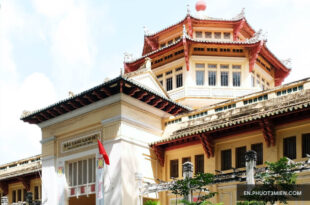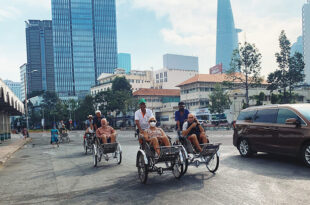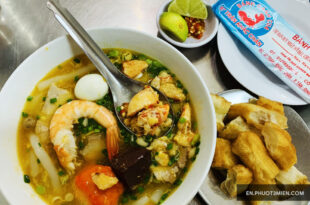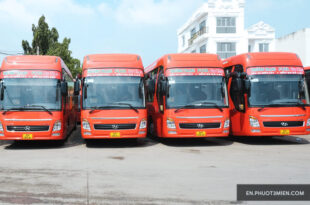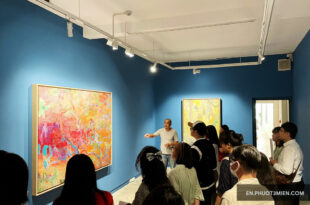The Complete Guide to Settling Down in Ho Chi Minh City
Trung Nguyen 30/05/2024 13/10/2022 0 46
If you are an expat about to settle down in Ho Chi Minh City, you will to need to know a few tips and tricks. There are things you must take care of before you leave, tricks you will want to know while you are there, and tips from a local that will make your move as seamless as possible.
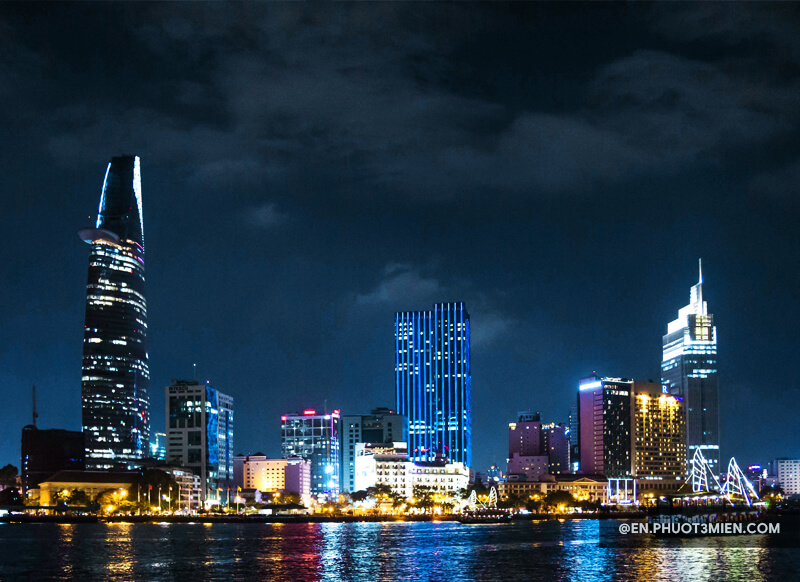
Having emerged as an economic center of Vietnam, Ho Chi Minh City might be the most convenient and dynamic region you can find in the country. If you are still unsure about visas upon entering Vietnam, check out this website from the Department of Customs of Vietnam. In this article, we are going to take a look at cultural spotlights, accommodation tips, transportation tips, market tips, and major financial concerns.
Things to Consider Before Moving
Saigon is the biggest city and the most important economic, educational, and cultural center of Vietnam. There are up to fourteen million inhabitants in this city, including a large amount of expats from all over the world. Being a melting pot of culture, there is nothing that you can’t find in Saigon. From masterful sushi to tasteful tapas and elegant French dishes, you will get what you desire, or if you are a drink-enthusiast, the number of craft beer venues and cocktail bars will certainly not fail any of your expectations.
When you first arrive in Saigon, I recommend staying in an Airbnb or a hotel for one or two weeks to get familiarized with the city (and to do some research). Give your body a rest to recover from jet lag, clear your mind from uncertainty, and organize yourself a little bit. Saigon is a bit noisy, from the early morning with the chickens and the dogs, then the endless honking and the thumping construction. Once you are adjusted to the noise, things will be pretty normal (and you will miss all the noise when you leave).
The Climate
Saigon is located in a tropical monsoon climate, featuring a stable hot and humid atmosphere all year round. There are two seasons in a year: the dry season and the rainy season. On average, the annual precipitation is around 1,800 millimeters and there are up to 160 rainy days in a year, comparable to Florida in the US. The rainy season is from May to the end of October.
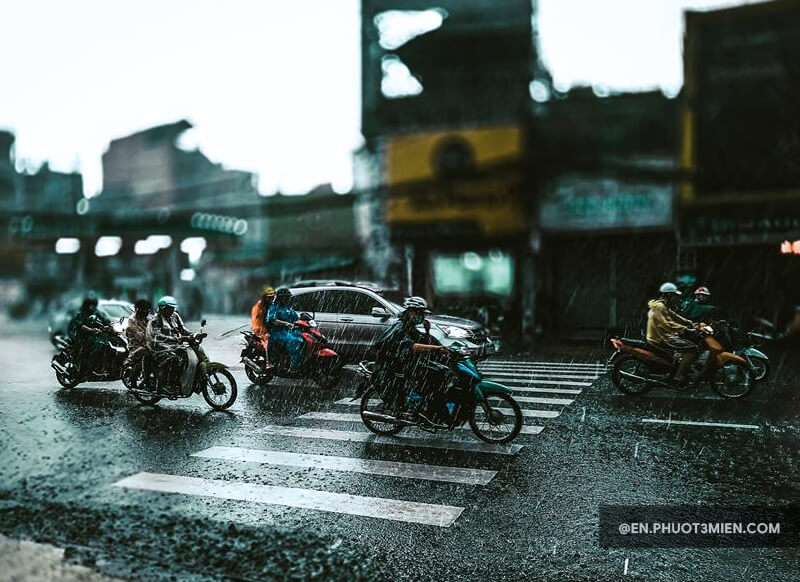
The average temperature is 28 degrees Celsius or 82 degrees Fahrenheit, with minor fluctuations throughout the year. For the record, the hottest month is April, up to 40 degrees Celsius (104 degrees Fahrenheit ) and the coldest month is January, no lower than 14 degrees Celsius. Believe me, it is chilling to the bone in January because of the high humidity, and you will probably need a good air conditioning system in your flat during the summer. There are around 2,400 to 2,700 hours of sunshine in a year in Saigon (it’s sunny 30% of the time).
The Local Cuisine
It is not an exaggeration to say that Saigon is a paradise for food lovers. The city location is central, surrounded by fruitful and productive agricultural areas, and it receives imports from two major harbors of Vietnam – Saigon harbor and Vung Tau harbor. Therefore, Saigon is the most promising destination to live and to do business in the country, attracting people and cash flows from all over the world.
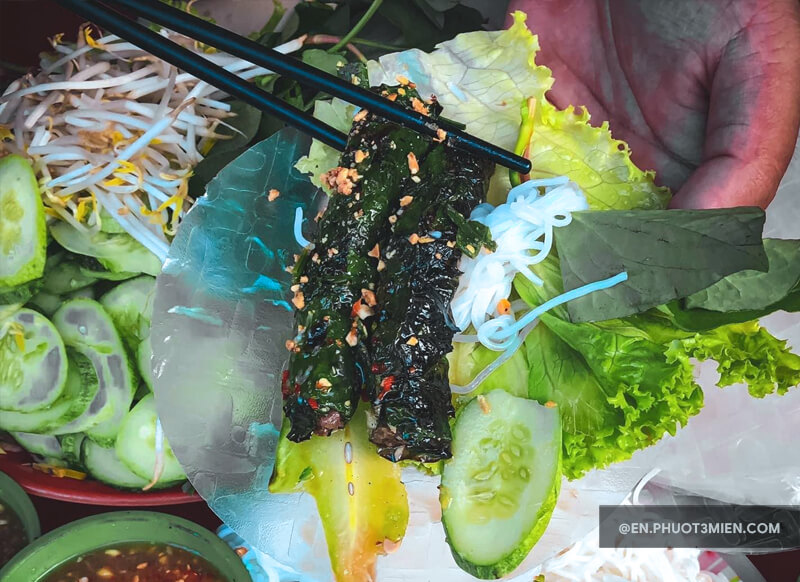
Because of that, the city is a multicultural melting pot, featuring worldwide cuisines and interesting food and drink fusions. You can find specialty dishes all over Vietnam from the North to the South, for example, you will find most of the food from the north and the central of Vietnam in Tan Binh District. In addition, Saigon is a home to many authentic cuisines from the world due to its demography and history of development, such as the Cantonese in China Town, the Japanese around Le Thanh Ton Street, the Korean area near the airport and in District 7, and the western cuisine in D1, D2 (Thao Dien), and D3.
But, the most attractive thing about the city is its all-out street food scene. We can classify the street food of Saigon into four major groups:
- Fulfilling dishes (for a main meal): noodles, pho, hu tieu, bun bo, com tam, soups, banh mi, banh cuon, etc. Food that you will have for a whole breakfast, lunch, dinner or a late night hangover cure. Nothing better than a heart-warming bowl of hu tieu go or banh canh cua in the middle of the night after heavy drinking.
- Desserts or sweet treats: sweet soups (Che), cakes, sweet pastries, tofu pudding with ginger syrup (tau hu), fruits, smoothies, etc. You will find these around every corner when in need of a sugar boost. No female white collar worker forgets to arm herself with a bagful of fruit for a day in the office. You will learn some Vietnamese, hearing those wandering dessert vendors chanting at a certain time of the day. Tau hu day… Me, xoai, coc, oi, trai cay tuoi day … and the infamous song from ice cream carts.
- Snacks: banh trang tron, bap xao, hot vit lon, ca vien chien, goi kho bo, bot chien etc. I won’t share any spoilers and let you discover these by yourself. Your crash Vietnamese course will be learning about these foods.
- Seafood and grills, especially snails (Oc): always integrate these foods into a night drinking out with your Vietnamese friends or colleagues. Best served with local cold beers.
The Cost of Living in Ho Chi Minh City
To basically survive in Saigon, without any recreational activities, you will just need as much as 500 US dollars including rental fees (around 300 US dollars for the most basic private accommodation). When I was a bit younger, I earned around 250 USD dollars per month (I stayed with my parents but rarely ate at home), and it was enough to have three meals every day including morning coffee and some after-work snacks, pay daily petrol and smokes, drink cocktails and eat sushi every week, go to the cinema twice a month, and go on some occasional parties or hang out with friends. Saigon will not let you starve.
This is a rough estimate of the basic living costs in Saigon for a person in a month, from my own experience:
- Accommodation rental: 300 USD ~ 1,000 USD (depending on the location, the dimensions and the utilities of the flat).
- Electricity, gas (for cooking) and water: 30 USD ~ 50 USD (depending on the usage, could be included in the rent)
- Mobile subscription (with 3G or 4G): 10 USD ~ 20 USD (depending on the usage)
- Internet: 8 USD ~ 15 USD (depending on the package, could be included in the rent)
- Basic daily meals: 100 USD ~ 120 USD (roughly 1 USD – 2 USD per meal, coffee, and soft drinks cost around half of the food price)
- Petroleum (or transportation): 20 USD ~ 50 USD – if you have your own bike, it costs around 3 USD for a full tank and lasts around four days.
- Eating out: from 10 USD per person for a meal. All-you-can-eat buffets start from 20 USD with hundred of dishes (Sumo BBQ for example). It cost me around 35 USD to invite my partner to a four-course dinner in a good Japanese restaurant, including drinks.
- Drinking out: from 1.5 USD for a beer bottle and 8 USD for a good cocktail.
Recreation and Socializing
Saigon never sleeps. That’s right. You can find something to entertain yourself from the break of dawn until the end of the night. For example, you can have a picnic in one of the popular parks (there are plenty!), visit the museums, the palaces, exhibition halls, and the artistic coffee shops during the daytime. Or ride around the city, explore the districts, watch a movie, get some nice ice cream, visit temples, pagodas, or even get out of the urban area to some rural points of interest. If you can name an activity, Saigon will offer it. As I said, there is nothing that the city lacks

When the sun is down, there are even more things to do. Night markets, food streets, rooftop bars, craft beers, mixology cocktails, luxury dinners, and partying clubs. Turtle lake, Nguyen Hue Boulevard, Bui Vien street, D7 Starlight bridge, D2 Vinhomes Central Park. I have spent 20 years in Saigon and there are even more destinations on my bucket list that I have not yet visited. Just eating out in all the good restaurants will take half of your lifetime, and even more pop up every day.
KKday is a travel APP platform offering over 20,000+ online products such as: tickets for amusement parks, outdoor services, sightseeing tours, culinary experiences, transportation, accommodation, courses, and local culture... Currently, there is a summer promotion with discounts up to 50% and coupons up to 250K VND off.

Attractive discount codes such as: 100K VND off for new accounts, 150K VND off summer promotion, 250K VND off, KKday birthday celebration...
Before You Arrive
Vaccination: You should check the latest country-specific information and advice from a high-credit site. A good site to check is the Centers for Disease Control and Prevention, which provides up-to-date information on important vaccines and immunizations. When you are in Vietnam, if you need emergency medical assistance, dial 115.
Important vaccines include, but are not limited to: Japanese Encephalitis, rabies, tetanus, and Typhoid. You should also think about having with you stomach aids, Azithromycin, and Malaria pills. Check with your insurance before you leave. Rabies and Japanese Encephalitis are expensive vaccines and some insurance companies do not cover preventative vaccines. These two vaccines also must be administered before a month of travel, the rabies vaccine is a series of three shots.
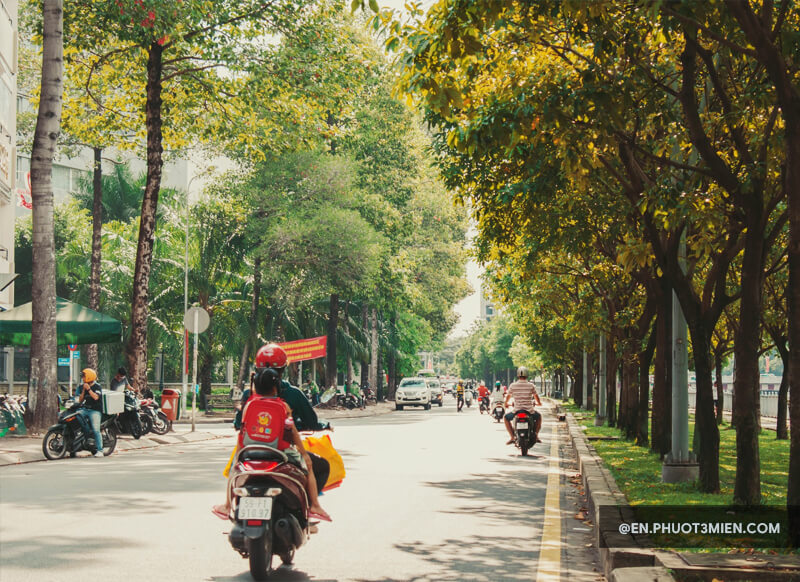
You can find good treatments for minor injuries in Ho Chi Minh City. There are very good hospitals and health care centers that you can find here. For more complicated treatment, you may need to go abroad. Make sure you have adequate travel health insurance and accessible funds to cover the cost of any medical treatment abroad and repatriation. There are many types of travel insurance out there, so make sure you pick one that covers the activities you will be participating in while abroad. One to keep in mind is motorbike coverage, you may have insurance but it might not cover bike accidents.
Warning: Some rice wines sold without recognized brand names have been found to have very high and sometimes fatal levels of methanol. Some have fake brand names. You should buy rice wines in recognized supermarkets.
Dengue fever is prevalent in the summer months, especially during the rainy season in the south. So watch out for mosquitoes. Some medicines are hard to find in Vietnam. Hence, if you take prescription medication into Vietnam, put it in your hand-luggage with a copy of the prescription. If your medication has the import value greater than 100 USD, you should declare it at customs.
There are restrictions on “addictive” or “psychotropic” medicine. Those medicines used for the treatment of addiction, anxiety, depression, insomnia, and other conditions are in this category. You must not have more than the quantity prescribed by a doctor for seven days (addictive medicine) or ten days (psychotropic medicine). The prescription should be in English or Vietnamese. It must include your name and age and list the name, volume, and dosage of the medicine(s), and doctor’s signature or address. If you’re unsure if your medication falls within these categories or if you need to bring in more medication, you should contact the Vietnamese Embassy before you travel.
Things to Bring
Prepare for your travel with clothes that are pertinent to your wardrobe, and that you may not find in Vietnam. Women will not have as much trouble as men, but do keep in mind that garments like underwear and swimsuits might be more difficult to find. For men, if you are thinking about teaching, you may want to bring a few nice dress shirts and slacks that fit. This also goes for shoes. You will find clothes eventually but you may want to have the appropriate attire right away. In big cities like Ho Chi Minh City, you still can find places to buy large clothes with good prices. Saigon Square or the Russian Market on Vo Van Kiet street, District 1 are what I recommend. You can also have things tailored! But again, this will take at least a week after alterations, so think about whether you need these clothes right away.
VISA
Tourist visa: Think about whether you will need a one-month or three-month tourist visa. Then determine if you will need to re-enter the country during this time in order to determine whether you want a single-entry visa or multi-entry visa. You can apply for a business visa while you are still in the country later if you decide to stay longer, but you will have to leave and then re-enter in order to legitimate it.
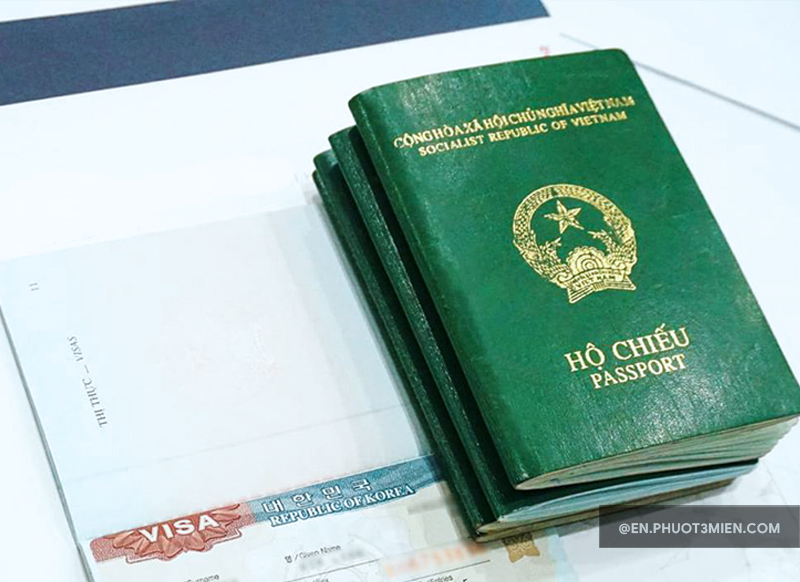
Business visa: Applicants need to get official entry clearance from their sponsor (usually the employer). You have the permission for multiple entries for up to one year. You have to obtain the approval from the Vietnamese Immigration Department through your sponsor. If you don’t have a sponsor party that can provide you with an entry clearance, you can also apply for a business visa for up to 90 days. You can check here to apply for the business visa.
Working visa: This visa allows you to be officially and legitimately paid by the Vietnamese government. If you are planning to work in the country as a teacher or something else, you will need this type of visa. Before you leave your home country, be sure to have the appropriate documents such as college diploma, college transcripts, vaccines confirmation, passport copies, and criminal record. A few of these documents also have to be notarized by your home country embassy.
Diplomatic or official visa: You need to bring important documents with you from your country if you want this. An official letter from your government office or foreign mission is compulsory.
Read more: All You Need to Know About Visas to Vietnam
Cultural Spotlights
People in Ho Chi Minh City immigrate from all around Vietnam (and the world). Hence, the city nurtures an open-minded culture. You can live in your own style and you should feel free to be yourself in town. This is an exciting city to live in right now, there are so many people coming together following their passions and creating connections. Be a part of this vibrant culture and contribute your love for life and for new relationships.
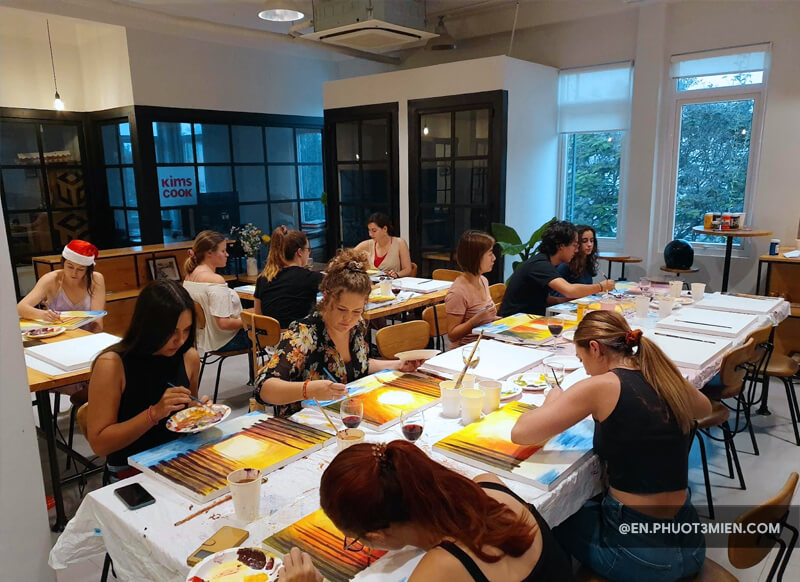
Besides being yourself, there is also a certain etiquette that you should notice in order to create a good first impression with the locals, yet not many. In terms of religion, most of the Saigonese are Buddhists, Christians, or non-religious people. Most people who are non-religious worship their ancestors and the Bodhisattva. And most importantly, religious discrimination is not accepted.
Read more: All About Etiquette and Customs in Vietnam
Mobile Phone
There are three popular data providers that dominate the market, including MobiFone, Vinaphone, and Viettel Mobile. The cost for the SIM itself starts at around 40,000 VND. After buying the SIM, you need to register the account. The documents you will need to do this are copies of your passport, visa, place of residence, and the address of the company you work for.
After that, in order to make a phone call, you will need to either buy data or register to pay the monthly fee. If you find your way to 80 Nguyen Du, District 1, you can do all the registration there. If you need this right away, you can also take care of it in the airport, just watch out for the extra fees.
Read more: Guide to Mobile in Vietnam
Accommodation
There are many accommodation options available, from a private flat in an apartment building, a bedroom in a local’s shared house, or even a shared room. Since there are a lot of inhabitants within a limited land, houses in Saigon are usually built high up, so they can fit more rooms and create more space. There could be no window if your room is located at the back of the house, and most of the windows have an inward metal frame to prevent thieves. Always remember to lock the doors and the windows carefully before going out.
The most cost-effective housing solution is definitely getting a bedroom in a shared house. You might be a bit skeptical about this option but trust me, it’s fun! This is the best way to make some local or expat friends, and learn more about life in Saigon. Most of these houses are located in some hidden alleys, away from the hustle of the streets, and only there you can experience the peace of the city. What could be more heart-warming than hearing the birds chirping and the children playing out the window when getting up in the morning?
Usually the process of getting accommodation is not that complicated and bureaucratic at all. Contact the owner/the landlord, set up a meeting to check your stay, get the payment done, and some registration with the local authorities, then move in. All of this takes no more than two days. More information about housing in Saigon is thoroughly covered in Tien Ly’s comprehensive guide about house rental here, it also includes the best districts to live in.
If you are not sure how to rent a house on your own, you can contact some intermediaries for better insight. In that case, District 1, District 2, and District 7 are the best places for expatriates!
District 1: In the heart of the city, District 1 houses the most important office buildings and premium apartment blocks. While the rental fee is high, the convenience and access are abundant. Vinhome complex, for example, is a great place to try. The average prices range from 800 to 1,500 USD per one-bedroom apartment per month. However, you will find old apartments with very low rental fees (roughly 400 to 500 USD per month).
District 2: With Saigon Pearl, Thao Dien area and the upcoming Sala Residential Side, District 2 is an ideal choice if you would like to immerse yourself in an expat community. It is only a 15-minute ride to District 1. During rush hour though, it can take much longer, maybe even 30 minutes. The average prices range from 600 to 1,000 USD per one-bedroom apartment per month.
District 7: If your office is not in District 7 and you usually have to travel to work, I highly recommend not settling down in District 7 due to heavy traffic jams during peak hours. Do you work here? This district is an ideal stay then! With the well-known Phu My Hung residential area, now Sunrise City complex, RMIT International University, and many high-end commercial centers emerging, District 7 seems to be built for expatriates to live and work. The average prices range from 550 to 700 USD.
Transportation
Walking: The Saigonese do not walk much! Vehicles on the street do not give much priority to the walker for the time being. If you would like to cross the street, make sure you step on the pedestrian crossing, and watch out for vehicles coming from both sides. You can either step forward or stand still, but don’t step back! And don’t run, the oncoming vehicles expect you to walk steadily across the street so do not deviate.
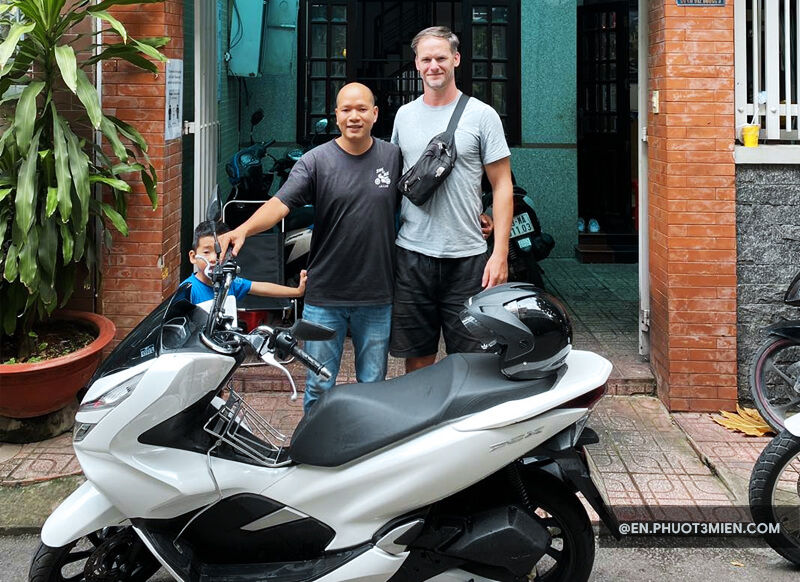
Public transportation: The bus is the only means of public transportation in town. These buses are not as fancy as the airport bus line, but are still in fine condition. If you catch the bus, be sure that you get on and off the bus quickly! You can check the bus map and a comprehensive set of relative information about each bus line: http://busmap.vn/. On the other hand, Saigon also offers a variety of convenient public transportation options, with the most popular being Grab, and the newest addition is the water bus on the Saigon river.
Bikes: With a net of small streets and a lack of public means of transportation, bikes suit the city’s infrastructure condition the most. Do spend your time carefully studying the laws and notices before you have fun with your own bikes. Wearing a helmet is a must, otherwise you’ll be fined 100,000 to 200,000 VND/ person. In Ho Chi Minh City, you can get away with taking Grab motorbikes everywhere; however, if you are settling down for a long time, you might think about buying a bike. Check out the local expat Facebook pages and be sure to take your bike for a test-ride before you purchase it. They can range from anywhere between 130 to 400 USD depending on model and year.
Car: Since the streets are not big, yet always full of bikes, no internal highway is available, and parking lots are limited, we highly recommend you avoid owning a car. Instead, Grab cabs and taxis are always available if you do not wish to travel in the radiant sunlight.
Markets
Not only are markets a place to buy food and inexpensive gadgets, they represent the face of the Vietnamese social life. Depending on where you stay, you can choose to visit a local market or a supermarket with AC.
Local Market
I recommend not opting for a local market until you have some knowledge of Vietnamese, this is key for bargaining. If you still really want to live like a local, learn how to say numbers one through ten and have the calculator on your phone ready. It is really easy to bargain by typing your price into the phone and using hand motions. People usually go to these markets to shop for basic household items – those that do not require great quality or guarantee. Here are several local markets that will give you a great experience:
- Fabric Wholesale Market: you can head to Soai Kinh Lam market on Dong Khanh street, District 5 (China Town), or Tan Binh market on Ly Thuong Kiet street, Tan Binh District.
- Cheap Household Products: Cho Lon is always first ranked if you are looking for wood, and handmade materials.
Supermarket
Co.opMart
You should have a Co.opMart membership card! They operate everywhere in the city, and there are a few stores across Vietnam. Although you may find their ambiance a bit old-fashioned and noisy, and at points slightly dirty, you can find everything you need at home on a daily basis here! They offer very good prices, which really brings people back despite the interior.
Several stores that are close to the expat community:
- 189C Cong Quynh street, District 1
- 168 Nguyen Dinh Chieu street, District 3
- 1 Nguyen Van Linh street, District 7
Lotte Mart
Lotte Mart is a typical hypermarket chain in Asia. In Ho Chi Minh City, they offer a great range from either medium or high-quality food and groceries. They also sell electrical products, but you may want to consider other vendors for better prices.
Address:
- 69 Nguyen Huu Tho street, District 7
- 968 Ba Thang Hai street, District 11
Citimart
This is a chain of 17 small yet premium supermarkets located around Ho Chi Minh City. They often settle in upscale buildings or high-class office complexes, so as to capitalize on customer convenience. If you are looking for certain imported cookies, candies, chocolates, and cannot find them in any other stores, Citimart might have it! However, fresh items are limited here. The prices are also higher compared to most other markets in town.
Among their many stores, below are close to the expatriate community:
- 230 Nguyen Trai street, District 1 (Citi Plaza)
- 35Bis – 45 Le Thanh Ton street, District 1 (Parkson Le Thanh Ton)
- 30 street 15, District 2 (An Khang)
- SC – 10 Green View, Nguyen Luong Bang street, District 7 (B&B Green View)
- SC 02 Ton Dat Tien street, District 7 (Garden Plaza)
Annam Gourmet Market
These stores sell high quality imported goods, and because of this, they are favored by the expat community. They offer fresh fruits, vegetables, gourmet groceries, good cheese, processed meats, organic items, gluten-free foods, alcohol to name a few. While their products are inviting, the prices are on the premium side.
Address:
- 16 – 18 Hai Ba Trung street, District 1
- 41A Thao Dien, District 2
Big C
There are many Big C centers in Ho Chi Minh City, so you can consider signing up for their membership card to enjoy a lot of promotions during the year. They sell a whole lot of things, from fresh foods to fine electric items. The best part is the prices are very reasonable! You can also bring your e-waste to Big C and they will take care of it for you.
Address:
- 138A To Hien Thanh street, District 10
- 202B Hoang Van Thu street, Phu Nhuan District
- 729 Nguyen Kiem street, Go Vap District
- 1231 National Road 1A, Binh Tan District
- 212 Thoai Ngoc Hau street, Tan Phu District
Financing
Currency
Foreign currencies must be exchanged into VND if you wish to use it. Find a gold shop, or money exchange shops on Dong Khoi street, District 1 for good rates. Don’t be afraid of the three last ‘000’ in VND. Everyone in Vietnam is a VND millionaire for the time being! We don’t use cents, so if you happen to have some, keep it as a souvenir or go to a bank. The smallest denomination of our currency is 200 VND (which is on the edge of extinction), and the largest one is 500,000 VND (also the biggest one in size). Make sure you don’t mistake the color of the 20,000 note and 500,000 note!
Read more: All About the Vietnamese Dong
Payment Method
While most shopping centers let you pay with a card, the local stores still don’t have a POS machine. Hence, it’s always advisable to have cash with you. There are several helpful e-wallets that you can try, such as: MoMo (with a lot of promotions), VTC Pay, and Zalo Pay.
Also keep in mind that many international banks will only let you pull out 3,000,000 VND which amounts to around 130 USD depending on the exchange rate. Keep this in mind if you must pay a large bill, such as rent. Try different ATM machines with your card, a few will allow upwards of 5,000,000 VND.
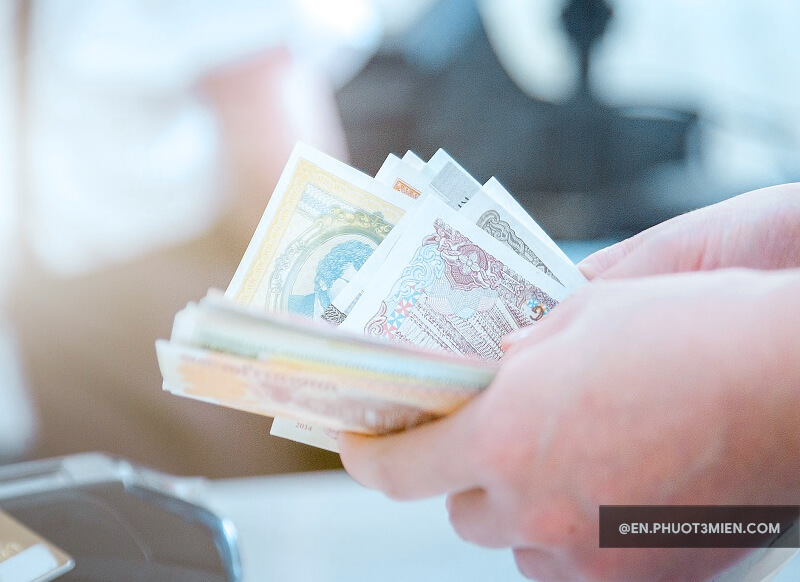
Banking
If you already have an account with a bank that has offices in Ho Chi Minh City, great! If you want to open an account with a local bank, Vietcombank is a safe and good choice. You may also want to create a Timo account, which helps you transfer money among different banks very quickly without any inter-banking fee, however, they do not allow international bank transfers. International bank transfers are still a bit tricky at the moment. A few banks, such as Vietcombank, will allow you to switch money from an international bank to your Vietnamese bank account and vice versa with very clear paperwork. These include payslips, tax slips, and a valid work visa. This also comes with a hefty fee.
There are many international banks that have a presence in Ho Chi Minh City for the time being. Which one to choose depends on your personal situation. Rest assured that you can withdraw money from ATMs of other banks, with the fee being around 5,500 VND per time withdrawal. The maximum withdrawal amount per time usually ranges from 1.5 million to five million VND. Several popular international banks in the city are Shinhan Bank, HSBC, CitiBank, to name a few.
Freelance Jobs
While many expats in Vietnam choose to improve their finance with a language teaching position, you also can utilize your skills to find other jobs. If you are good at art, try operating painting workshops (Tipsy Art is doing this very professionally), a trendy entertainment form among the young Vietnamese generation. You can also think about translation jobs, copy-editing jobs, and business related teaching positions. There are many choices out there if you do not want to teach English.
Taxes
As an expat, your personal income tax may fall in one of these five categories:
(1) Individual who resides in Vietnam indefinitely but does not have Vietnamese citizenship.
(2) Foreigner who works in Vietnam but lives in Vietnam for less than 183 days during the consecutive 12 month period
(3) Pay taxes like the locals. The taxation regulations may change, so make sure you consult your case with a specialist.
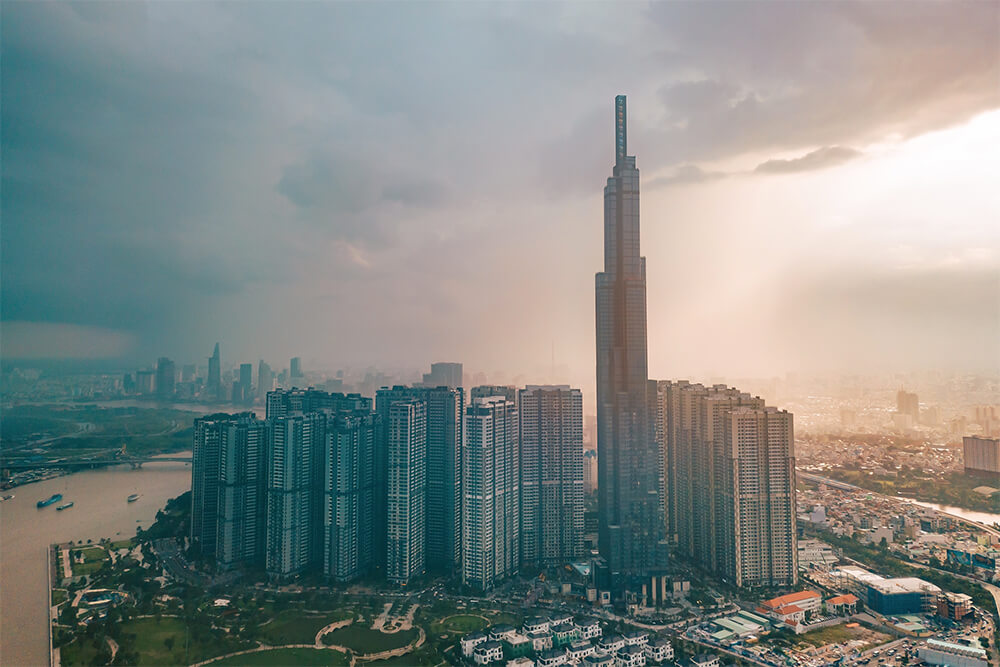
It is not too difficult to get used to Vietnam. There are still social problems to be addressed, such as small robbery, littering, and non-queuing. Yet, the hospitality of the Vietnamese people compensates for what the country lacks. You only need to be easy-going, understanding, and eager to experience a new lifestyle. This city will welcome you with warmth and happiness. We hope you will have a good time in town!
If you enjoyed reading this article and would like some more fun info about what to see, do and eat (and a bunch of interesting cafes!) in Vietnam, follow us at Travel Blog Phuot3mien!
